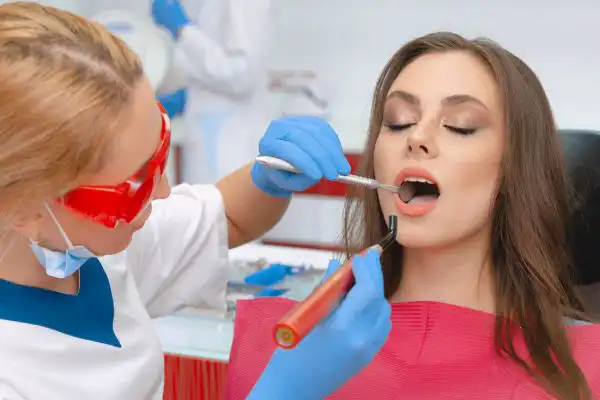Restorative Dentistry
Table of Contents
A Smile Makeover Journey
Restorative dentistry is not just about fixing teeth; it’s about restoring confidence, functionality, and the joy of a beautiful smile. In a world where dental health plays a pivotal role, understanding the nuances of restorative dentistry becomes essential.
The foundation of restorative dentistry lies in various procedures designed to repair and enhance oral health. From traditional fillings to advanced dental implants, each technique serves a unique purpose in revitalizing smiles.

Signs That You May Need Restorative Dentistry
Toothaches, sensitivity, or visible damage to teeth are signs that should not be ignored. Recognizing these indicators early can prompt timely intervention, preventing further complications.
Benefits of Restorative Dentistry
Beyond the obvious cosmetic improvements, restorative dentistry offers a plethora of benefits, including improved oral health, enhanced aesthetics, and the restoration of optimal dental function.
Choosing the Right Restorative Dentist
Selecting a skilled and experienced dentist is crucial. Assessing qualifications, experience, and patient reviews ensures that you entrust your smile to capable hands.
Innovations in Restorative Dentistry
Advancements in technology, such as 3D printing and laser dentistry, have revolutionized restorative procedures, making them more precise, efficient, and comfortable for patients.
Aftercare Tips Following Restorative Procedures
Maintaining oral hygiene post-procedure is essential. Adopting recommended practices and attending regular check-ups contributes to the longevity of restorative dental work.
Cost Considerations
Understanding the factors influencing the cost of restorative dentistry and exploring insurance coverage options helps in making informed decisions about dental procedures.
Common Myths About Restorative Dentistry
Common myths about restorative dentistry often revolve around misconceptions regarding pain and invasiveness. One prevalent myth is that restorative dental procedures are always painful. In reality, advancements in dental technology and anesthesia have significantly reduced discomfort during treatments. Another misconception is that restorative dentistry only addresses aesthetic concerns, neglecting the importance of overall oral health.
Restorative procedures, such as dental implants and crowns, not only enhance the appearance of teeth but also contribute to the functionality and stability of the entire oral cavity. Dispelling these myths is crucial to encouraging individuals to seek timely restorative dental care, promoting both aesthetic improvements and long-term oral well-being.
Restorative Dentistry for Children and Teens
Early intervention in dental issues for the younger population sets the stage for a lifetime of good oral health. Child-friendly practices make dental visits a positive experience.
Impact of Diet on Dental Health
Beyond dental procedures, understanding the role of diet in oral health is crucial. Avoiding certain foods and incorporating essential nutrients contribute to overall dental well-being.
The Role of Technology in Diagnosis
Modern diagnostic tools, such as X-rays and digital imaging, enable early detection of dental issues, facilitating timely and effective treatment.
The Journey to a Beautiful Smile
Restorative dentistry is more than just fixing teeth; it’s a holistic approach to oral health and well-being. Whether addressing dental issues in adults or ensuring a positive experience for children, the journey to a beautiful smile is transformative and rewarding.
Definition of Dental Terminology
Composite Resin
A tooth-coloured filling material composed of a mixture of plastic resin and finely ground glass particles. It is used for dental restorations in visible areas due to its aesthetic appeal.
Crown
A dental restoration that covers and protects the entire visible portion of a tooth. Crowns are used to strengthen weakened teeth, restore damaged teeth, or improve the appearance of misshapen or discoloured teeth.
Bridge
A fixed dental restoration used to replace one or more missing teeth by spanning the gap between adjacent teeth. It consists of crowns on the natural teeth (abutment teeth) with a false tooth (pontic) in between.
Veneer
A thin shell of tooth-coloured material (usually porcelain or composite resin) that is bonded to the front surface of a tooth. Veneers are used to improve the aesthetics of teeth with discoloration, chips, or irregularities.
Dental Implant
A titanium post surgically implanted into the jawbone to serve as a replacement for a missing tooth root. An artificial tooth (crown) is then attached to the implant, restoring both function and appearance.
Dental Prosthesis
An artificial device used to replace missing teeth or other oral structures. Examples include dentures, bridges, and dental implants.
Endodontics
The branch of dentistry that deals with the diagnosis and treatment of diseases of the dental pulp (the innermost part of the tooth), usually involving root canal therapy.
Inlay
A type of dental restoration that fits within the contours of the tooth, typically used to repair moderate to large cavities. Inlays are fabricated outside the mouth and then bonded to the tooth.
Frequently Asked Questions
Restorative procedures are typically performed under anaesthesia, minimizing discomfort. Patients may experience mild soreness, which can be managed with prescribed medication.
Recovery times vary depending on the procedure. Most patients resume normal activities within a few days, with full recovery achieved in a matter of weeks.
Absolutely. Restorative dentistry not only addresses functional issues but also enhances the aesthetics of your smile, boosting confidence and self-esteem.
Many dental insurance plans cover a portion of restorative procedures. It’s advisable to check with your insurance provider for specific details regarding coverage.
Regular dental check-ups every six months are recommended to monitor the condition of restorative work and address any emerging issues promptly.
